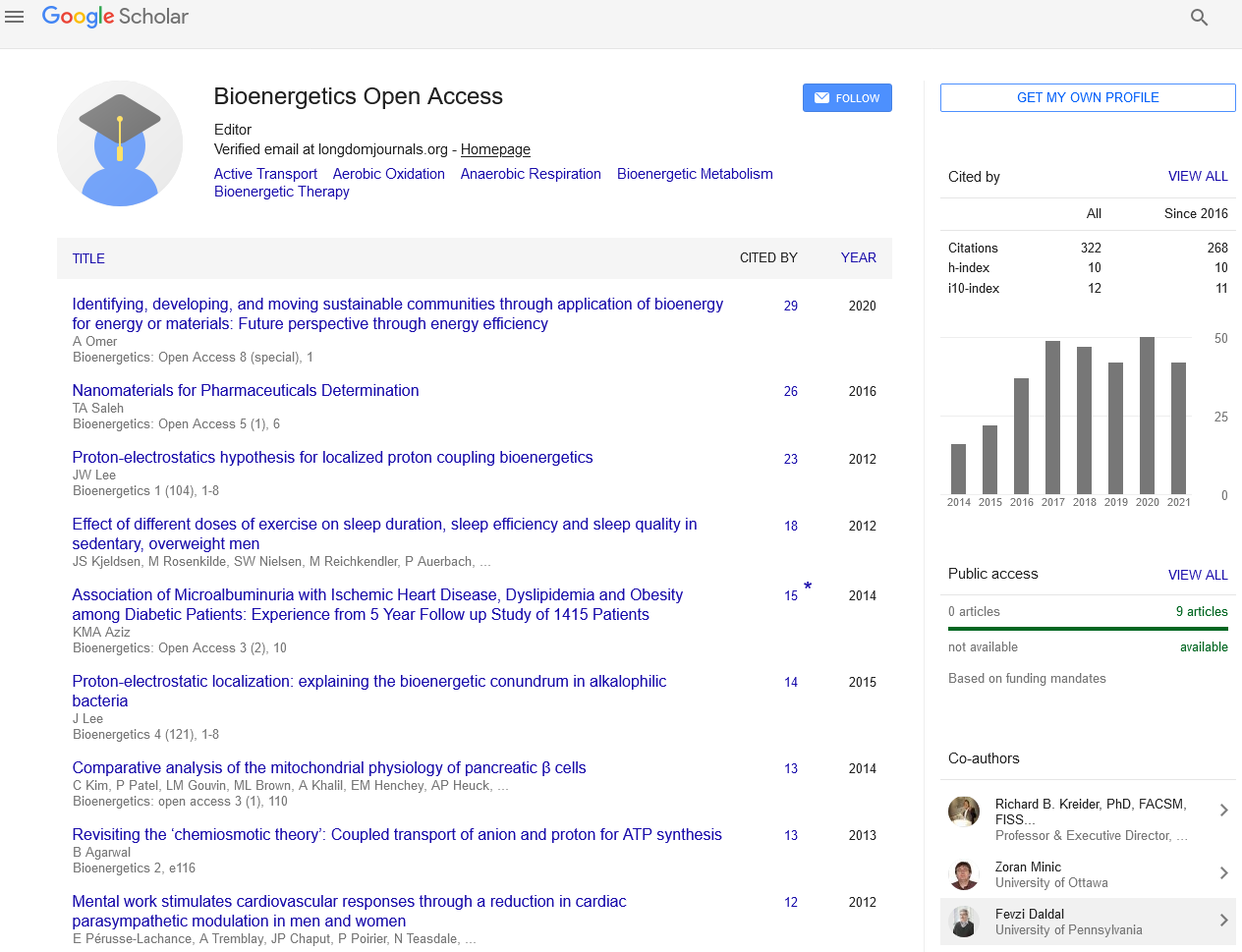Indexed In
- Open J Gate
- Genamics JournalSeek
- Academic Keys
- ResearchBible
- RefSeek
- Directory of Research Journal Indexing (DRJI)
- Hamdard University
- EBSCO A-Z
- OCLC- WorldCat
- Scholarsteer
- Publons
- Euro Pub
- Google Scholar
Useful Links
Share This Page
Journal Flyer

Open Access Journals
- Agri and Aquaculture
- Biochemistry
- Bioinformatics & Systems Biology
- Business & Management
- Chemistry
- Clinical Sciences
- Engineering
- Food & Nutrition
- General Science
- Genetics & Molecular Biology
- Immunology & Microbiology
- Medical Sciences
- Neuroscience & Psychology
- Nursing & Health Care
- Pharmaceutical Sciences
Abstract
Investigation of biogas generation from the wastes of a vegetable market in single and double chamber reactors
Dr. Md. Abdul Jalil
This paper presents the results of two sets of laboratory experiments
on biogas generation from the wastes of a rural vegetable
market of Bangladesh under daily victual condition. The
quotidian average composition of facilely biodegradable wastes
was utilized as the substrate for biogas generation. Cow dung,
cauliflower stick, papaya and potato were the major biodegradable
wastes. The average total solids (TS) and volatile solids
(VS) concentrations of the substrate were tenacious and found
to be 18.90% and 15.10% respectively. The experimental setups
were placed in an astronomically immense closed chamber
containing a room heater. It was operated at 35oC to maintain
an auspicious condition for anaerobic digestion. In the first
setup, 750 g waste and required amplitude of inoculum were
integrated initially to a single chamber reactor to make the efficacious
volume of 2 L, and a double chamber reactor (middle
interconnection) was initially alimented with 750 g wastes (350
g in each chamber) and inoculum was integrated to make the
efficacious volume of 1 L for each chamber. Both the reactors
were operated for 39 days. Considering the HRT as 40 days,
from the 2nd day of operation, each reactor was alimented daily
with a coalescence of 18.75 g wastes and required volume of
tap dihydrogen monoxide to make the total volume of 50 mL
after dispensing equal volume of slurry from the reactor. The
results of the experiments revealed that the temperature varied
from 30 to 35oC and it did not affect the rate of biogas generation.
For the OLR of 1.42 gVS/L/d, the quotidian stable biogas
generation rate was 0.39 and 0.32 m3/kg of VS integrated
for the single chamber reactor and the double chamber reactor
respectively.
Published Date: 2020-07-25; Received Date: 2020-07-22

